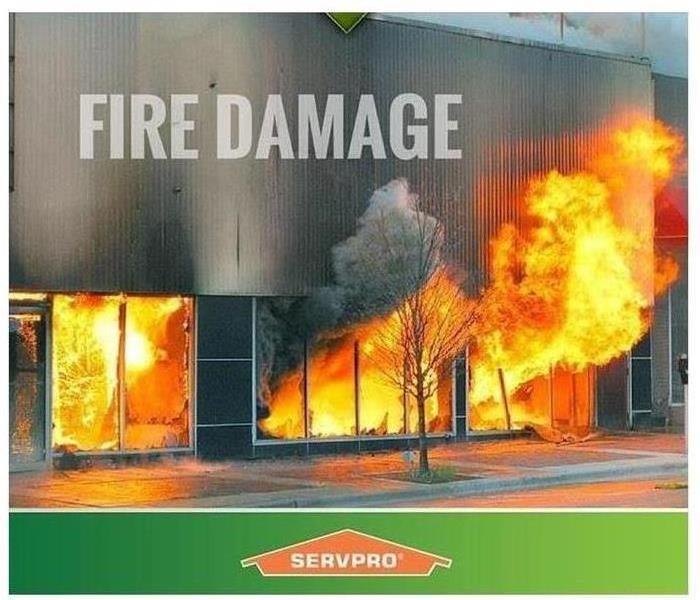Kitchen Fire tips
4/6/2021 (Permalink)
How to Put Out a Small Kitchen Fire in Your Home
The consequences of a small kitchen fire range from ruining your favorite pan to destroying the whole kitchen. Being well-versed in the right solutions as well as using your best judgment is your best defense.
However, it’s important to remember that a kitchen fire is most manageable when it’s still small, and we have a better shot at putting out a fire in the kitchen when we catch it immediately. We do this by not leaving cooking unattended.
Knowing how to put out a kitchen fire means understanding that not all are alike. We’ll go over each scenario so you’ll know how to respond appropriately.
Microwave or Oven Fire
You’ve made popcorn a thousand times, but this time you pushed the wrong button or added an extra digit to the cooking time. Accidentally cooking something to the point where it burns is the usual cause of microwave fire.
Oven fires can also be started when the baking is well overdone, or if flammable material drips down to the heating element. Oven fires can also happen when an oven gets to be too dirty from food particle buildup.
You may have a reflex to open the oven door, but do not open the door. Instead, how to put out an oven fire is to allow it to suffocate. Leaving the door closed, you’ll turn off the oven or microwave oven to stop the cooking (unplug when possible).
Eventually, the flames will consume all of the oxygen, and oxygen is what the fire needs to sustain itself. The flames should eventually snuff out, but if they persist, call the fire department.
Fire on a Stove
A stray uncooked noodle rolls underneath the burner. If it gets too close to the gas flame or the electric coils, it will catch on fire. Stove fires happen when oils or bits of food make contact with the heating element.
As you would with an oven fire, it’s best to put out a stovetop fire with something that can cover the flames and deprive it of oxygen. A large or pan lid would be best for this. Cover the flames and let them die off.
Salt and baking soda are also effective with putting out stove fires. Douse the flames with either of these items (but not flour as it may make it worse).
The big lid approach is a lot less messy than pouring out salt or baking soda. Next, we’ll explain why we avoid using water to put out a kitchen fire.
Grease Fires
Fats are a part of the American diet, so when we prepare foods we may have grease from animal fat or use oils for cooking. Say you wanted to try adding olive oil to the water when boiling pasta. If the water starts to boil over, the oil mixed with it makes contact with the burner and a fire starts. The same thing could also happen with oil spills or grease splatters from a pan. Grease fires are more precarious to put out compared to other kinds of fire.
- Don’t use water to put out grease fires. Water won’t put out the fire, it will just divert the grease and thus spread the fire.
- For a small fire, use the big lid trick as mentioned earlier. Turn off the burner and cover the burning pan or the burner itself with the lid tightly so it’s deprived of oxygen.
- Pour baking soda or salt on the flames until it’s snuffed out (again, do not use flour).
- Use a water-soaked towel to smother the flames. This is different from pouring water on the flame.
- Use a fire extinguisher, pointing it at the base of the flames.






 24/7 Emergency Service
24/7 Emergency Service
